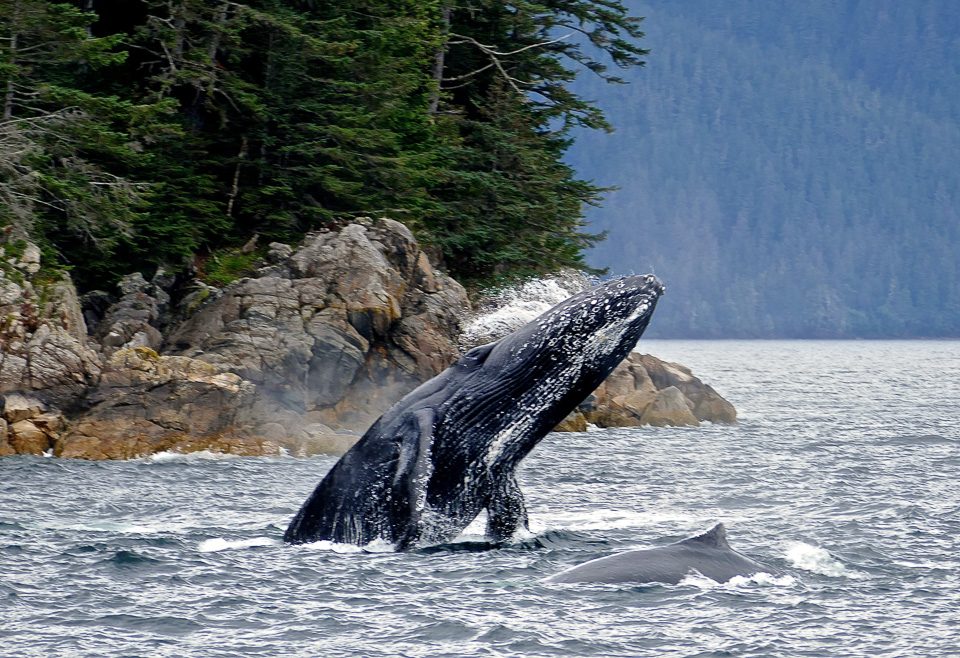|
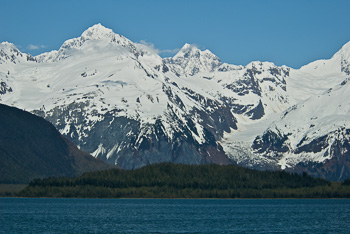 CONSERVATION IN FOCUS (2) CONSERVATION IN FOCUS (2)
A NATURALIST’S VOYAGE TO
SOUTHEAST ALASKA’S WILD COAST
June 14-23, 2016 10 Days/9 Nights
Dr. Geoff Hammerson, Audrey Benedict, Bob Rozinski & Wendy Shattil, Sarah
Drummond, and the M/V Westward’s Crew
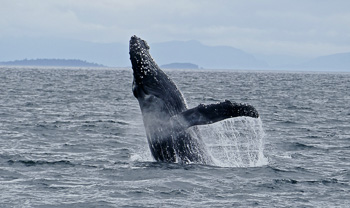 Few places in North America rival the scenic
beauty and wildlife diversity of Southeast Alaska.
Join us for an all-new voyage aboard our “classroom
afloat”—the M/V Westward—as we explore
the remote islands, spectacular fjords, old-growth
forests, whale-rich waters, seabird colonies, sea
lion haulouts, and tidepools of the outer coastal
wilderness. The M/V Westward provides the
perfect setting for our Conservation in Focus
voyages. The use of sea kayaks allows us a
special seal’s-eye view of the marine world.
Beginning sea kayakers will find this an ideal
setting in which to learn. Unlike big cruise ships,
Westward is trim enough to explore the narrowest
of fjords and to wander among remote rocky
islands. Each evening, as you enjoy another
superb dinner and share the day’s discoveries, we
know you’ll agre Few places in North America rival the scenic
beauty and wildlife diversity of Southeast Alaska.
Join us for an all-new voyage aboard our “classroom
afloat”—the M/V Westward—as we explore
the remote islands, spectacular fjords, old-growth
forests, whale-rich waters, seabird colonies, sea
lion haulouts, and tidepools of the outer coastal
wilderness. The M/V Westward provides the
perfect setting for our Conservation in Focus
voyages. The use of sea kayaks allows us a
special seal’s-eye view of the marine world.
Beginning sea kayakers will find this an ideal
setting in which to learn. Unlike big cruise ships,
Westward is trim enough to explore the narrowest
of fjords and to wander among remote rocky
islands. Each evening, as you enjoy another
superb dinner and share the day’s discoveries, we
know you’ll agre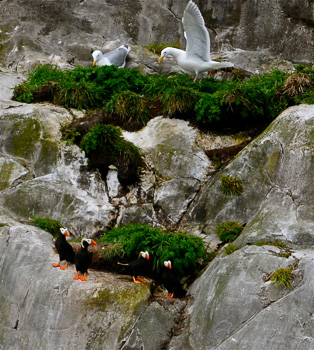 e that there is no finer way to
experience the wonders of Southeast Alaska. e that there is no finer way to
experience the wonders of Southeast Alaska.
We begin our adventure in Sitka, the political and
cultural hub of Russian adventurism in Alaska and
the North Pacific during the 19th century. This
city offers a unique window into Tlingit history
and a native people’s struggle to preserve cultural
identity in the face of a burgeoning European and
American presence. Visits to the Totem Trail National Historical Park and the Sheldon Jackson
Museum reveal a powerful cultural and artistic
tapestry that interweaves the natural world with a
human lifeway that respects both. The siren call
of the wild outer edge beckons and we board
Westward, casting off for Krestof Sound. This will
be the first of several anchorages in the midst of
island archipelagos that beg our exploration. We’ll
island-hop our way from Klag Bay to White
Sulphur Hot Springs, and then venture by kayak
and skiff to the surf-lashed reefs and tidepools of
the Porcupine Islands. Previous visits have been
remarkable for their marine mammal and seabird
diversity. Cruising north to Surge Bay, we’ll have
yet another chance to experience the rich intertidal
wilderness of the outer coast and to see
petroglyphs left behind by ancient voyagers.
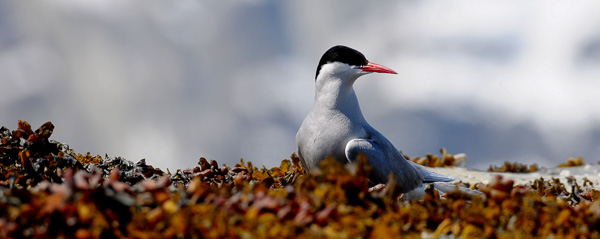
If sea conditions smile upon us—an important
“if” because we need reasonable seas in both
directions—we embark on a 64-mile open ocean
run along the southern edge of the Gulf of Alaska
to Lituya Bay. The only access to this legendary
outlier of Glacier Bay National Park is by small
boat or float plane. The bay itself is a spectacular
whale-shaped fjord that lies within the snowy
embrace of the Fairweather Range. 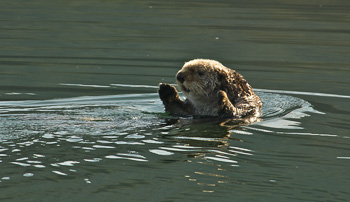 The fjord is
situated at the confluence of three glaciers—the
Lituya, the Cascade, and the North Crillon—and
centered along the famous epicenter of intense
geologic activity known as the Fairweather Fault. The fjord is
situated at the confluence of three glaciers—the
Lituya, the Cascade, and the North Crillon—and
centered along the famous epicenter of intense
geologic activity known as the Fairweather Fault.
Archaeological evidence reveals that the ancestral
Huna Tlingit lived in Lituya Bay for thousands
of years prior to the arrival of Europeans. In fact,
Tlingit villagers were at Lituya Bay and greeted
the arrival of Lapérouse’s ship in 1786. The
Tlingit’s rich oral tradition tells us that they
experienced the devastating effects of multiple
earthquakes associated with the fault. Since 1899,
nine earthquakes have rumbled across the region,
toppling mountains and flaying this ice-carved
landscape to its bedrock roots.
CRN_2016_brochure.jpg)
Brown bear (MH)
In 1958, a magnitude
8.3 earthquake centered on Cross Sound,
45-miles to the southeast, set the fjord into earthwrenching
motion and triggered a landslide and a
1,740-foot-tsunami-like wave. The opportunity to
explore the extraordinary geology and human
history of Lituya Bay is a rare gift.
If sea conditions force a change in course, we’ll
head into Icy Strait and continue on to Dundas
Bay, another fabulous outlier of Glacier Bay
National Park. We’ll have myriad photographic
and natural history opportunities as we navigate
Icy Strait’s prime humpback whale waters. If our
timing is right, the roiling waters near the mouth
of the strait provide whales, Steller sea lions,
harbor seals, and seabirds with a spectacular
“fish buffet.” We’ll be watching for humpback
whales lunge-feeding and may even spot groups
of humpbacks working cooperatively to entrap
schools of small fish or krill through the creation
of a “bubble net.” 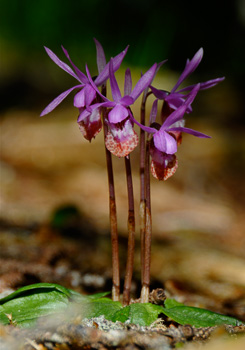 Continuing toward Dundas Bay
we should see increasing numbers of sea otters
and will be on the lookout for both brown and
black bears working the intertidal areas. Continuing toward Dundas Bay
we should see increasing numbers of sea otters
and will be on the lookout for both brown and
black bears working the intertidal areas.
In addition to exploring the natural history of
Southeast Alaska, we’ll discuss the impact that
global warming is having on the region’s glaciers
and how changes in prevailing ocean currents
may affect the populations of small fish that
marine mammals and seabirds depend on for
food. We’ll also offer mini-workshops that help
you hone your skills in portraying the world
around you in a more compelling way—either
through photography or sketching. We’ll create
a book based on our shared experiences and
observations that truly captures the essence of
Southeast Alaska and the wild outer coast.
-CRN_2016_brochure.jpg)
Sea otters (MH)
Price: $6,550 (includes a $1,000 deposit)
Group Size: 12 Trip Rating: 2-3
Price includes:
1 night’s lodging in Sitka (6/14)
and 1 night’s lodging in Juneau (6/22), 8 days/7
nights aboard the M/V Westward, all meals and
beverages (wine/beer included) aboard and onshore,
the services of our 4 naturalist leaders,
the Westward’s 4-person crew, full sea kayak
outfitting and instruction, gratuities to the crew,
boat/hotel transfers, and a copy of the trip’s photo
book.
The price quoted is per person based on
double occupancy; single accommodations are
unavailable on this trip.
Does not include roundtrip airfare from your point of departure to Sitka
on 6/14 or your return from Juneau on 6/23.
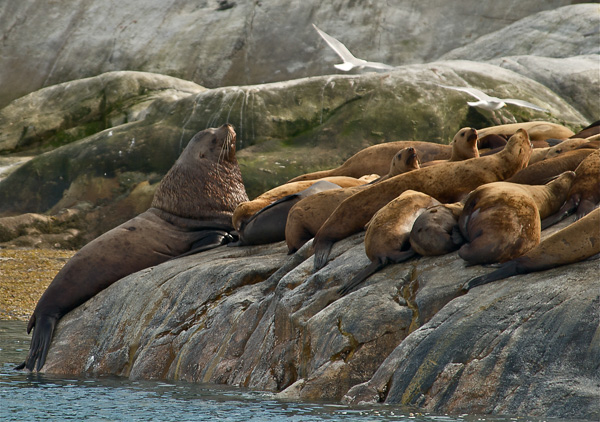
|
